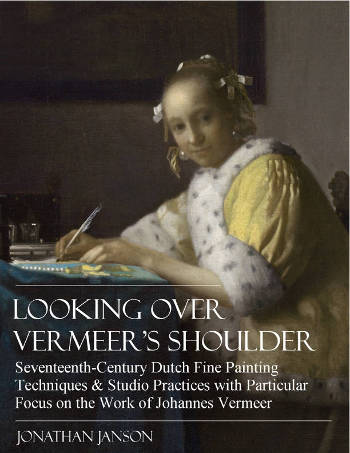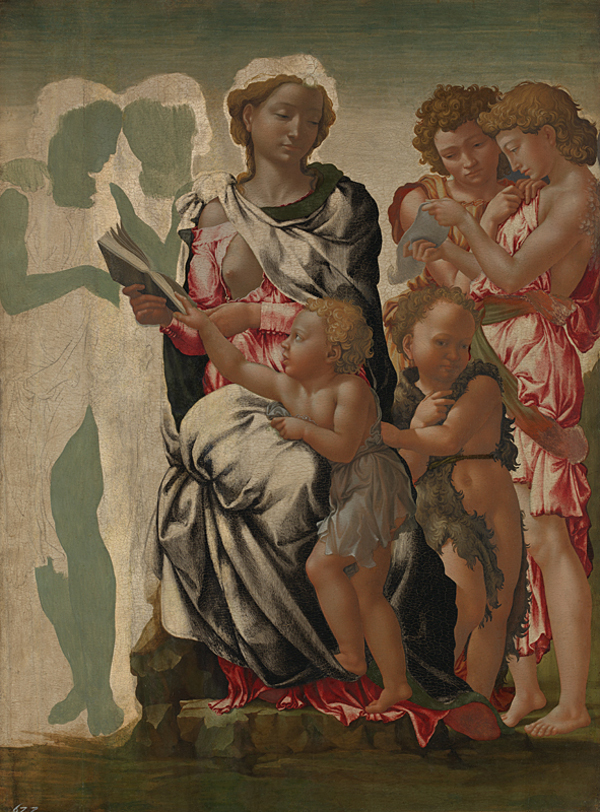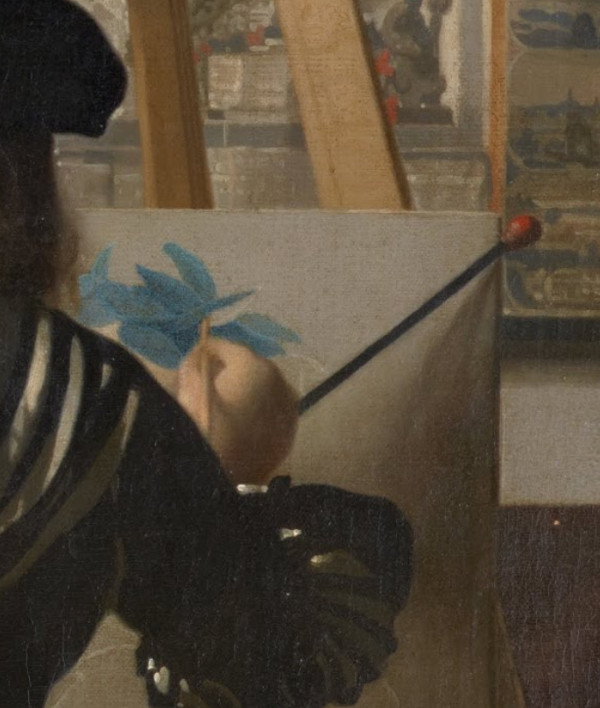The concept of "working up" in seventeenth-century painting refers to a particular stage in the painting process, distinct from the initial underpainting or "dead-coloring" phases. In historical European artistic practice, the creation of a painting often involved multiple layers and stages, each with its own set of objectives.
During the "working-up" stage, the artist would focus on refining the painting by adding details, depth, and texture to the forms established in the underpainting. This is the stage where the artist would give specific attention to the proper rendering of materials, like the sheen on silk or the texture of skin, and the correct coloring of each element. It is also the stage where the final contours and boundaries between forms would be established.
The objectives of this stage varied depending on the painter's style, the artistic conventions of the period, and the type of painting being created. In the seventeenth century, for example, there was a strong emphasis on realistic representation, especially in genres like still life and portraiture. Therefore, the "working-up" stage was crucial for achieving the level of detail and realism that paintings from this era are known for.
The transition from the underpainting to the working-up stage was significant. Underpainting primarily laid out the composition and general lighting scheme of the painting. It created a base layer, often in monochrome or a limited color palette, upon which the artist would build up layers of more complex color and texture. The working-up stage is where this buildup occurs, often using glazes and other techniques to achieve nuanced color effects and intricate details.
The concept and practice of working up a painting may have differed slightly from artist to artist and school to school, but it remains a useful term for understanding a critical stage in the creation of many seventeenth-century European paintings.
After defining the composition and the basic lighting scheme with the underpainting, Vermeer proceeded to the working-up stage. In Dutch,working-up is referred to as "'opmaken." In the working-up stage, "Each distinct area of the painting was executed as a separate entity and finished in one or two sessions. Whenever it was necessary to achieve strong, bright colors, (for red, yellow and blue robes and the like), the passage concerned was executed within carefully delineated contours in accordance with a fixed recipe, involving a specific layering or fixed type of underpainting."Ernst van de Wetering, Rembrandt: The Painter at Work (Berkeley: University of California Press, 2004).
During this stage, the painting can indeed appear disjointed and disharmonious because the artist is focusing on individual sections, often in great detail, without the cohesive layering and glazing that bring everything together in the final stages.
The artist may work on one area extensively, making it highly detailed while other parts of the painting remain less developed. This can create an imbalance in the composition that might look jarring when viewed as a whole. Elements like color, shading, and texture are often mismatched at this stage because they have not yet been integrated into a harmonious whole. Thus, the multi-step painting technique, which includes stages like underpainting and working-up, requires a great deal of discipline, foresight, and faith in the process from the artist. He must exercise patience and control in "dosing" his efforts, knowing that each stage serves a specific purpose that will contribute to the final piece.
LOOKING OVER VERMEER'S SHOULDER
The complete book about Johannes Vermeer's and 17th-century fine-painting techniques and materials
by Jonathan Janson | 2020

Enhanced by the author's dual expertise as both a seasoned painter and a renowned authority on Vermeer, Looking Over Vermeer's Shoulder offers an in-depth exploration of the artistic techniques and practices that elevated Vermeer to legendary status in the art world. The book meticulously delves into every aspect of 17th-century painting, from the initial canvas preparation to the details of underdrawing, underpainting, finishing touches, and glazing, as well as nuances in palette, brushwork, pigments, and compositional strategy. All of these facets are articulated in an accessible and lucid manner.
Furthermore, the book examines Vermeer's unique approach to various artistic elements and studio practices. These include his innovative use of the camera obscura, the intricacies of his studio setup, and his representation of his favorite motifs subjects, such as wall maps, floor tiles, and "pictures within pictures."
By observing closely the studio practices of Vermeer and his preeminent contemporaries, the reader will acquire a concrete understanding of 17th-century painting methods and materials and gain a fresh view of Vermeer's 35 masterworks, which reveal a seamless unity of craft and poetry.
While the book is not structured as a step-by-step instructional guide, it serves as an invaluable resource for realist painters seeking to enhance their own craft. The technical insights offered are highly adaptable, offering a wealth of knowledge that can be applied to a broad range of figurative painting styles.
LOOKING OVER VERMEER'S SHOULDER
author: Jonathan Janson
date: 2020 (second edition)
pages: 294
illustrations: 200-plus illustrations and diagrams
formats: PDF
$29.95
CONTENTS
- Vermeer's Training, Technical Background & Ambitions
- An Overview of Vermeer’s Technical & Stylistic Evolution
- Fame, Originality & Subject Matte
- Reality or Illusion: Did Vermeer’s Interiors ever Exist?
- Color
- Composition
- Mimesi & Illusionism
- Perspective
- Camera Obscura Vision
- Light & Modeling
- Studio
- Four Essential Motifs in Vermeer’s Oeuvre
- Drapery
- Painting Flesh
- Canvas
- Grounding
- “Inventing,” or Underdrawing
- “Dead-Coloring,” or Underpainting
- “Working-up,” or Finishing
- Glazing
- Mediums, Binders & Varnishes
- Paint Application & Consistency
- Pigments, Paints & Palettes
- Brushes & Brushwork
The technique of completing paintings one area at a time originated with the use of water-based tempera, which is technically even more limiting than oil paint, was in universal usage. An example of this procedure can be observed in Michelangelo's unfinished Manchester Madonna (fig. 1). Painters generally worked up one passage at a time (fig. 2), roughly analogously to the manner in which the fresco painter depicted successive sections of wet plaster, known as "giornate."

(The Manchester Madonna)
Michelangelo
c. 1497
Egg tempera on wood, 104.5 x 77 cm.
National Gallery, London
There are fundamentally two reasons for painting in a piecemeal fashion, one area at a time. The first is that painters of Vermeer's age had to grind their paints by hand each day.Although the principal of hand grinding paint is fairly simple, the actual practice presents many subtleties that can be only mastered through experience. The pigment and binder are spread out a marble surface and ground with stone muller until the desired consistency is reached. Hand ground paint used in Vermeer's time was probably stiffer than today's commercially sold paints in tubes, which contain thickeners and fillers to prolong their shelf-life. Metal tubes were widely employed only in mid 1800s so excess paint that had not been used could be kept temporarily in pig's bladders or emerged in water over night to prevent contact with oxygen, which induces drying. Each artist could impart to his paints particular qualities he may have desired. The apprentice were taught how to make paints in the master's studio. Once he became sufficiently proficient he only the quantity of paint that would be necessary for the day's work. Neither the vast number of pigments nor pre-prepared paints in convenient metal tubes existed until the mid-nineteenth century. Since hand grinding is a laborious and time consuming chore, artists had learned to limit the number of costly paints necessary for the day's work by painting in a restricted area where few colors were necessary. Moreover, each pigment presented its own inherent possibilities and limitations, and were thus combined only when necessary. Permanence, workability, compatibility and drying qualities could differ so strongly from one pigment to another that it is was normal to use pigments in the purest form possible or mixed in combination with a limited range of other pigments. In fact, contemporary depictions generally show artists working with small palettes that hold only a few colors.

(detail showing artist in the initial phase of working up)
Johannes Vermeer
c. 1662–1668
Oil on canvas, 120 x 100 cm.
Kunsthistorisches Museum, Vienna
The second reason for completing one area at a time was that paintings were often more complex in composition and far more detailed than they are today. This was even more so when the multi-step working method was being perfected during previous centuries by artists such as Jan van Eyck and Albrecht Dürer. In effect, because each passage of the painting corresponded to a distinct visual experience, a different technical approach was required in order to convincingly render its visual experience. The luxurious sheen of satin could not be rendered with the same technique used for the rough texture of the bark of an ancient tree. For example, Vermeer most likely used a stiff bristle hog's-hair brush to manipulate of the heavy impasto necessary to create the brilliant passage of white-washed wall in The Art of Painting. The rough texture of the paint surface imitates the texture of the white-washed wall and its peaks catches rays of raking light, making it sparkle. On the other hand, the softness of the artist's hair was worked with a thin layer of muted ocher and smoothed imperceptibly with a badger brush.
Although the working-up method would seem an adversry of the extraordinary pictorial unity prevalent in Baroque painting, the difficulty in harmonizing each separate passage with the others was largely offset by the unifying effect of the monochrome underpainting.
Once relatively ready-to-use, mutually compatible industrial manufactured paints became available and neither detail nor naturalistic effects considered desirable, the multi-step working method vanished, and replaced by alla prima painting.
Working-Up in Vermeer's Painting
Recent study of Vermeer's canvases indicates that the artist most likely adopted the standard working-up method. Many passages of his mature works are completed with only one or two layers of paint. There is reason to believe that considerable time occurred between sittings. Rather than a being a slow painter, Vermeer was meditative painter who pondered every passage of his current work with the utmost concentration.
One would expect that a painting constructed in such a piecemeal manner would resemble a patchwork whose parts are clearly distinct one from the other. How then was Vermeer able to achieve such an unprecedented pictorial unity for which his art is known? One reason is that Vermeer used few pigments, perhaps no more than 20 in all, while only a dozen or so were used with any regularity.
The Woman in Blue Reading a Letter was most likely painted with a limited palette including white lead, ultramarine blue, one or two earth colors like raw umber or yellow ocher, black, and a red used sparingly in the backing upholstery of the right-hand chair.Some traces of red may also have been found in the face which most likely have faded with time. A reduced number of colors facilitates harmony.
The pictorial unity of Vermeer's compositions was also sustained by the monochrome underpainting the elementary relationship between light and dark as a whole. Once the underpainting was dry, the artist superimposed layers of colored paint. The chiaroscural values of the underpainting helped the artist to match the darkness or lightnessu of the subsequent colored paint layers. While the lighter areas were generally rendered with full body color consisting in one or two pigments mixed in varying proportions, shadows were often painted in very thin semi-transparent layers of paint, leaving the warm ground to acting as a unifying agent. The warm brown underpainting in the robe of the Girl with a Red Hat can been seen through the irregular brushstrokes of the natural ultramarine paint which lies over it.
In any case, it is difficult to understand the sequence in which Vermeer worked up each passage. By analyzing the system of overlapping areas of pigment, Ernst van der Wetering has hypothesized that Rembrandt worked from "the back to the front." No such study has been performed on Vermeer's paintings. However, one might reason that the background walls, which play such an important role in the artist's pictorial conception, may have been among the first areas to be completed in the working-up phase. More than any other pictorial element, the walls determine the amount and quality of light that will be represented in a given scene. Analogously, landscape painters often depict the sky first in order to gauge the correct colors of the actual landscape below. It is obvious that the sky influences the tone of the landscape and not vice versa. After the tones of the wall had been established,, Vermeer then worked up the larger areas of color such as the various costumes worn by the models, which play a decisive role in the chromatic the painting's harmony.
